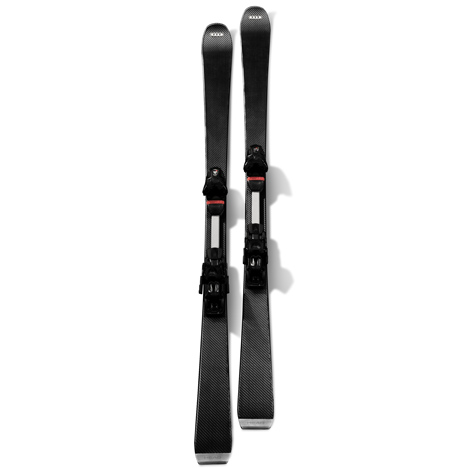
Audi Carbon Ski by Audi Concept Design Munich
Audi Concept Design Munich have developed a carbon ski design that combines technology from the motorsports and winter sports industries.
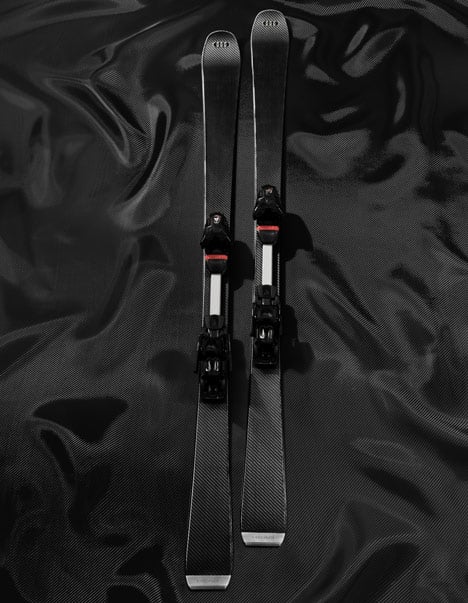
The Audi Carbon Ski has wooden core plus layers of aluminum and titanium, all covered in a carbon case.
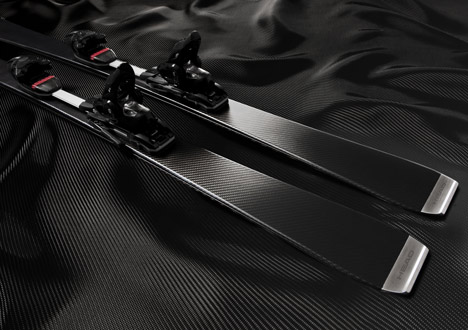
The ski weighs just 960 grams, 200 grams less than comparable models.
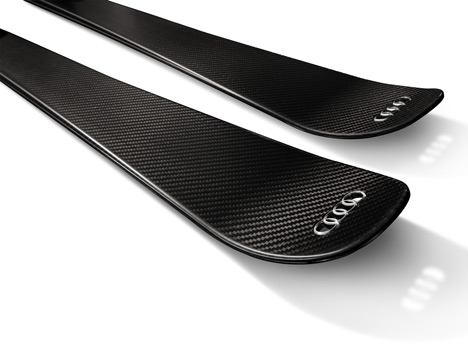
The concept was designed by Audi Concept Design Munich, then developed into a serial production product in collaboration with sportswear brand Head and the German Ski Association.
The information below is from Audi:
Lightweight design for winter sports
The Audi Carbon Ski
- Carbon: a base material with revolutionary properties
- Performance: technology transfer from skiing and motorsport
- Design: no unnecessary lines or applications
Know-how drawn from skiing and motorsport has been used to develop the perfect ski. The Audi Carbon Ski concept is an eye-catching piece of sports equipment with a minimalist design that focuses fully on one premium material: carbon. The concept study was designed and developed at Audi Concept Design Munich – but like a racing car, it can only be mastered by a top professional. For this reason, the team surrounding chief designer Wolfgang Egger began working on the development of a serial-production ski with the ski specialists from Head. The Audi Carbon Ski may become available already in winter 2011/2012.

The technology transfer from the concept study to the serial-production Audi Carbon Ski was crucial throughout all of the developmental phases. A cab of high-strength carbon fiber encloses layers of aluminum and titanium, as well as a wood core. At 1,550 grams (with a ski length of 170 cm), the ski will be about 200 grams lighter than comparable models. This allows it to be incredibly maneuverable and agile.
The carbon allows the engineers to achieve optimal stiffness while also minimizing torsion, which is the twisting of the ski along its longitudinal axis. Outstanding strength, good dampening and low weight make the Audi Carbon Ski a carving ski that fully lives up to the Audi philosophy of “Vorsprung durch Technik.”
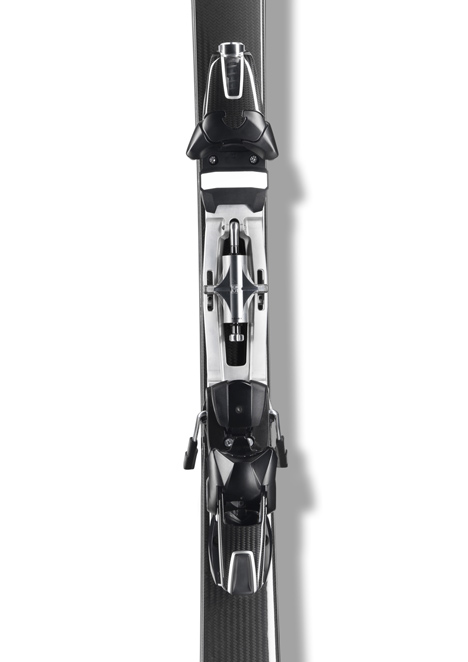
“As a long-time partner and sponsor of the German Ski Association, a ski produced by Audi is a logical consequence of this partnership. This is how the Audi Carbon Ski concept came about. And the ski’s brilliant handling characteristics have been confirmed by professionals from the sport,” said Wolfgang Egger, Head of Design for the Audi Group. “The serial-production ski was able to borrow from the concept study, and it features outstanding technical properties. At the same time, its minimalist design underscores the technical nature of the carbon.”
In January 2011, as part of the most famous downhill race in the world – the Hahnenkamm race in Kitzbühel – customers were able to test the first prototypes of the Audi Carbon Ski. In addition to extensive tests by specialists from Head and the German Ski Association, these results will contribute to the ability to offer a perfected ski.
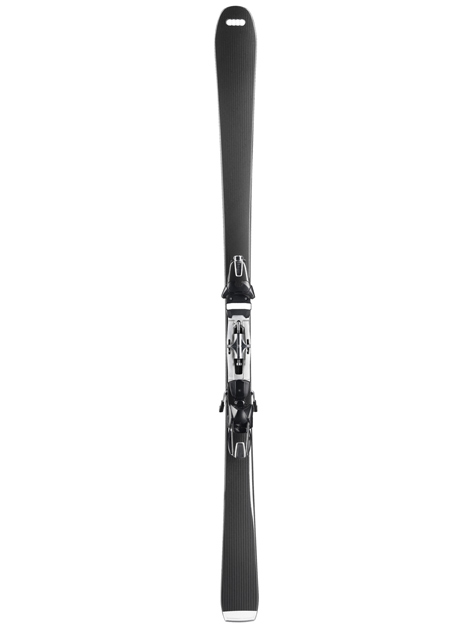
Audi Carbon Ski concept
During development of the Audi Carbon Ski concept (2008/2009), Audi profited from over 20 years of partnership with the German Ski Association and its own considerable experience in motorsport. Parameters that have proven reliable over many decades of ski sports were analyzed with the use of complex calculation methods drawn from motorsport. The result: construction specifications for a full-carbon ski that guarantees perfect handling properties. After extensive tests, scientific experts from the German Ski Association confirmed the high quality of the Audi Carbon Ski concept.
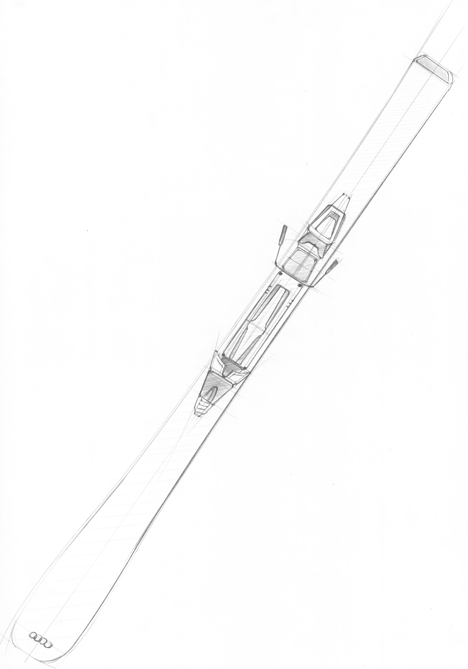
A ski is a technically sophisticated piece of sports equipment, but it is also a highly aesthetic object that is optimized for top performance. The project at Audi Concept Design Munich – in the heart of the urban district Schwabing – was based on these considerations. The team of young, international designers was able to transfer the Audi design gene from the brand’s cars to the ski. “Carbon and aluminum are central elements in Audi design – these exclusive materials underscore the outstanding quality of our cars,” Egger said. “The design of the ski also intentionally dispenses with unnecessary lines and concentrates fully on the material.”
“Thanks to its ideal combination of strength and light weight, carbon is used in motorsport for especially sensitive components that need to withstand the highest stress loads yet must at the same time be light in weight,” says Dr. Wolfgang Ullrich, Head of Audi Motorsport. In the racing cars for the German Touring Car Masters (DTM) and the Le Mans sports cars, for example the new R18, the driver’s cockpit – the so-called monocoque – is made from high-strength carbon fiber. “When creating this possibly lifesaving carbon component, we use the same calculation methods as those that were used for the concept development of the Audi Carbon Ski concept,” Ullrich said.
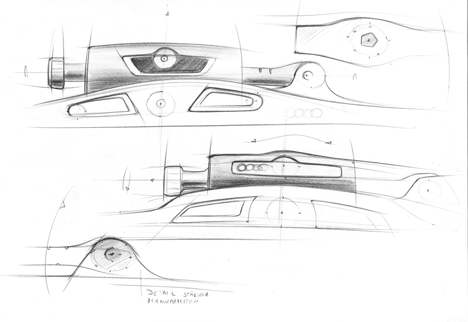
The calculations for the ski define precisely how many layers of carbon must be used – in doing so, the carbon fibers are placed at a specific angle to each other. This allows the engineers to achieve optimal stiffness with minimal torsion. The layers are hardened under pressure in an artificial vacuum.
The influence on the handling properties of the ski is revolutionary: the ski flexes on the mogul slopes to achieve optimal grip on uneven surfaces. On icy patches, on the other hand, the ski must not twist, so that the steel edges can maintain their grip on the snow along their entire length. Thus, the ski never loses contact with the ground. The light weight of the carbon also plays a critical role for skiing curves. The weight per ski is a mere 960 grams.
See also:
.
 |
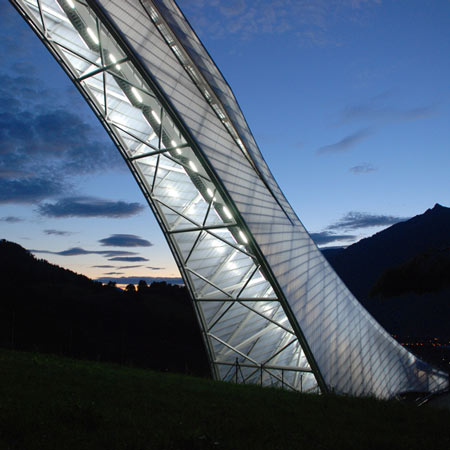 |
 |
| Ski slope on a power plant roof |
Olympic ski jump by terrain:loenhart&mayr |
Holmenkollen ski jump by JDS Architects |